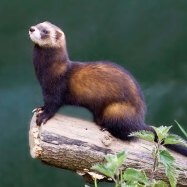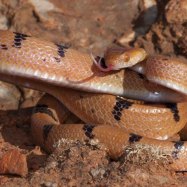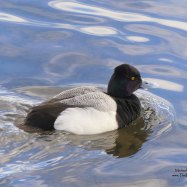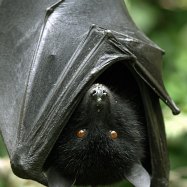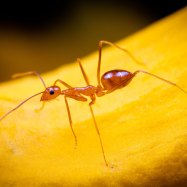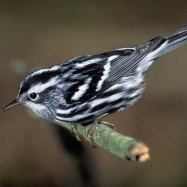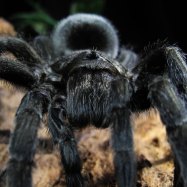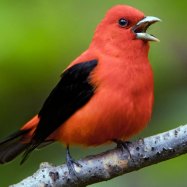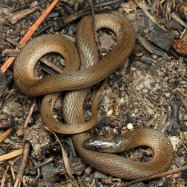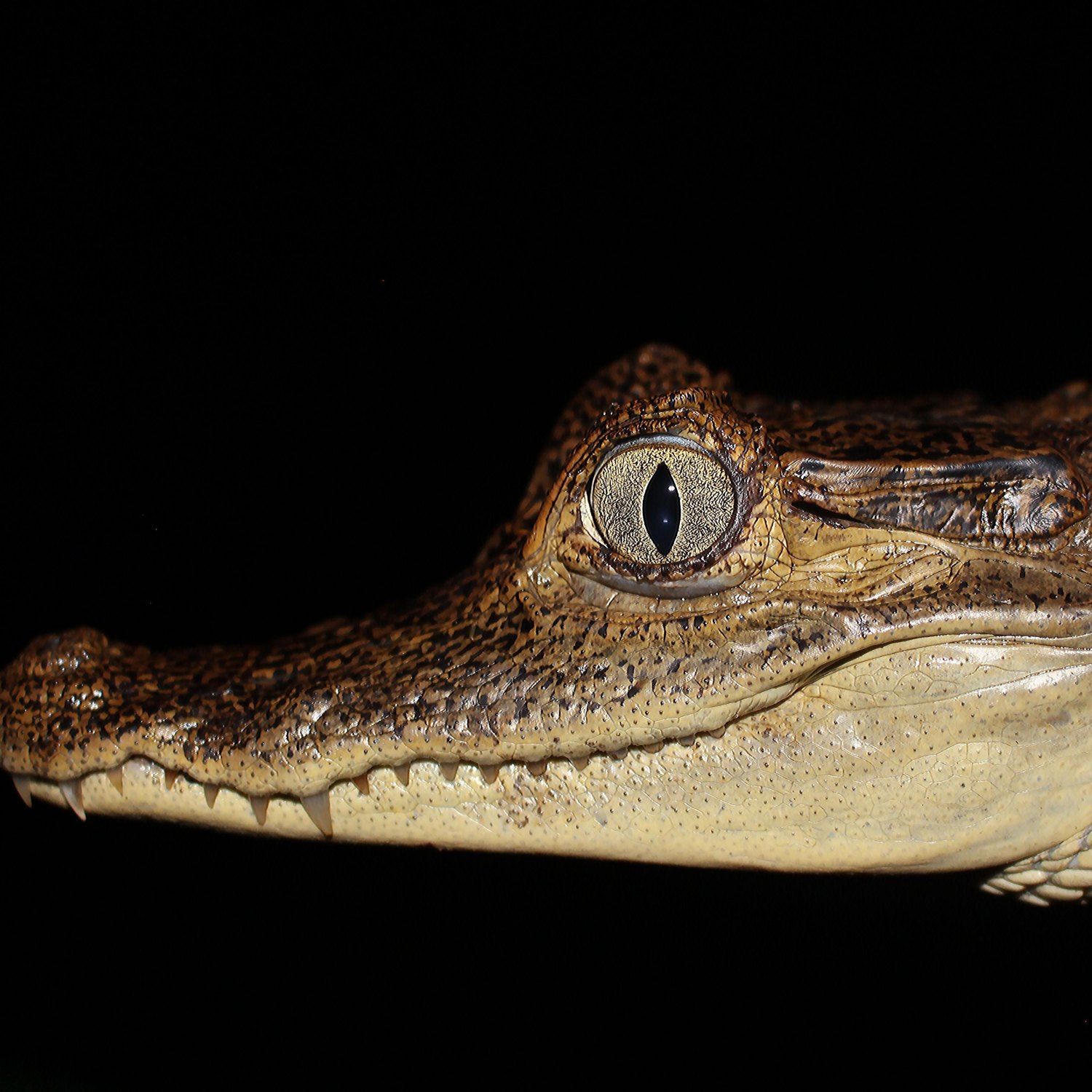
Caiman
Up to 4.9 meters
Explore the fascinating world of the Amazon Rainforest with the Caiman, a long and muscular reptile from the Alligatoridae family. At up to 4.9 meters in length, these creatures are fierce predators and an essential part of the Amazon's ecosystem. Witness their incredible power and beauty firsthand on your next jungle adventure. #AmazonRainforest #Caiman #Alligatoridae #Wildlife
Animal Details Summary:
Common Name: Caiman
Kingdom: Animalia
Habitat: Freshwater swamps, rivers, lakes
The Mighty Caiman: The Apex Predator of the Amazon Rainforest
As you explore the vast and diverse landscape of the Amazon Rainforest, you may come across one of its most impressive inhabitants – the caiman. These magnificent creatures are often referred to as "mini crocodiles" due to their physical similarities and their shared place in the order Crocodilia. Despite their smaller size, caimans are still apex predators in their environment, ruling the waterways and swamps of Central and South America. In this article, we will delve into the fascinating world of caimans, learning about their unique adaptations, behavior, and their crucial role in the delicate ecosystem of the Amazon Caiman.The Basics: Scientific Name and Classification
The scientific name for caiman is Caiman crocodilus. They belong to the kingdom Animalia, the phylum Chordata, and the class Reptilia. They are a part of the family Alligatoridae, which includes alligators and caimans' larger cousin, the crocodile. Caimans are further classified into four different species: the spectacled caiman, the yacare caiman, the dwarf caiman, and the Cuvier's caiman.A Familiar Sight in the Amazon
Caimans are found exclusively in the freshwaters of South and Central America, making the Amazon Rainforest their ideal habitat. They are most commonly found in the rivers, swamps, and lakes of Brazil, but they can also be spotted in other parts of the Amazon basin, including Peru, Colombia, and Ecuador. These reptiles have adapted to the warm and humid conditions of the rainforest, making it their home for millions of years.Physical Characteristics and Adaptations
Caimans have a distinct, dark-colored body, ranging from dark brown to almost black. They have a long, muscular body, with powerful tails and sturdy legs that help them navigate through the water and move quickly on land Cat Eyed Snake. The coloration of their skin helps them blend into the murky waters, making it easier for them to sneak up on their prey.One of the most noticeable features of caimans is their elongated snout. This adaptation helps them to catch prey in the water and can also be used as a weapon in fights with rival males. However, their snout is not as long as that of a crocodile, making it easier to differentiate between the two species. Another unique feature of caimans is the bony ridge on their head, known as the osteoderm. This serves as a protective armor, especially when caimans are young and vulnerable to attacks from larger predators.
Size and Weight
Caimans come in a variety of sizes, depending on the species. The smallest of them, the dwarf caiman, can grow up to 1.2 meters in length, while the spectacled caiman can reach lengths of up to 2.5 meters. The largest species, the yacare caiman, can grow up to a whopping 4 to 4.9 meters in length and weigh up to 400 kilograms. Despite their size, caimans are agile swimmers and can reach speeds of up to 32 kilometers per hour in the water.Carnivorous Appetite
Like all crocodilians, caimans are carnivorous, and their diet consists primarily of fish, crustaceans, insects, and small vertebrates such as birds, mammals, and other reptiles. Caimans have a strong and robust digestive system, allowing them to feast on their prey's bones and shells without any difficulty. They also have sharp teeth, which they can use to grip onto their food and tear it apart. Caimans have even been known to scavenge for food, especially during the dry season when prey can be scarce.Behavior and Social Interactions
Caimans are solitary animals, and unlike some other crocodilians, they do not form strong bonds with their offspring. In fact, caimans are known to cannibalize their own young, making survival in their environment even more challenging. They are most active during the night, where they are most likely to hunt for food. During the day, they can often be found basking in the sun, regulating their body temperature and conserving energy.Threats and Conservation
Caimans' biggest threat is their interactions with humans. Their beautiful and durable skin has made them a target for the illegal skin trade, putting them at risk of extinction. However, due to conservation efforts and restrictions on hunting, most species of caimans are considered to be of least concern. In some areas, caiman farming has become a sustainable and regulated way of producing leather goods, reducing the need for illegal poaching.The Vital Role of Caimans in the Ecosystem
Caimans, like all creatures in the Amazon, play a crucial role in maintaining the delicate balance of the rainforest ecosystem. They are apex predators, keeping the population of their prey species in check, and preventing overgrazing or overfishing. Caimans also help to maintain the health of the rivers and waterways by consuming dead and decaying matter, preventing it from building up and causing pollution.The Coexistence of Humans and Caimans
Despite their fearsome reputation, caimans are not typically aggressive towards humans. In fact, their main goal is to avoid interactions with humans, and they will only attack if they feel threatened or if they are defending their territory or young. However, as human settlements continue to encroach on the Amazon Rainforest, it becomes increasingly important for us to coexist peacefully with these animals and respect their space.Future of Caimans in the Amazon
As caretakers of the planet, it is our responsibility to protect and preserve the unique and diverse flora and fauna of the Amazon Rainforest, including the mighty caimans. Through responsible and sustainable practices, we can ensure that these fascinating creatures continue to thrive in their natural habitat for generations to come.In conclusion, the caiman is a true symbol of the Amazon Rainforest's strength and resilience. With their impressive adaptations, powerful presence, and vital role in the ecosystem, they truly are the apex predator of this biodiverse and magnificent environment. So, the next time you explore the Amazon, keep an eye out for these incredible creatures and admire their place in nature's intricate web.

Caiman
Animal Details Caiman - Scientific Name: Caiman crocodilus
- Category: Animals C
- Scientific Name: Caiman crocodilus
- Common Name: Caiman
- Kingdom: Animalia
- Phylum: Chordata
- Class: Reptilia
- Order: Crocodilia
- Family: Alligatoridae
- Habitat: Freshwater swamps, rivers, lakes
- Feeding Method: Carnivorous
- Geographical Distribution: Central and South America
- Country of Origin: Brazil
- Location: Amazon Rainforest
- Animal Coloration: Dark brown or black
- Body Shape: Long and muscular
- Length: Up to 4.9 meters
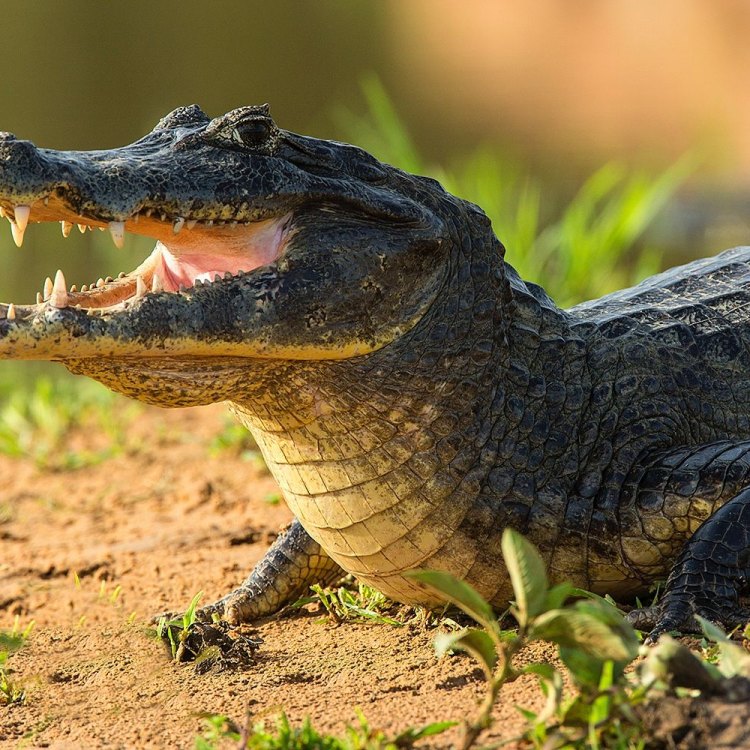
Caiman
- Adult Size: 2.5 to 4 meters
- Average Lifespan: Up to 40 years
- Reproduction: Sexual
- Reproductive Behavior: Mating occurs in water
- Sound or Call: Loud hissing or bellowing
- Migration Pattern: N/A
- Social Groups: Solitary or small groups
- Behavior: Nocturnal
- Threats: Habitat loss, hunting, and climate change
- Conservation Status: Least Concern
- Impact on Ecosystem: Top predator, helps maintain ecosystem balance
- Human Use: Leather and meat
- Distinctive Features: Ridge on the back and a long, sharp snout
- Interesting Facts: Caimans are closely related to alligators and crocodiles
- Predator: Humans, larger crocodiles
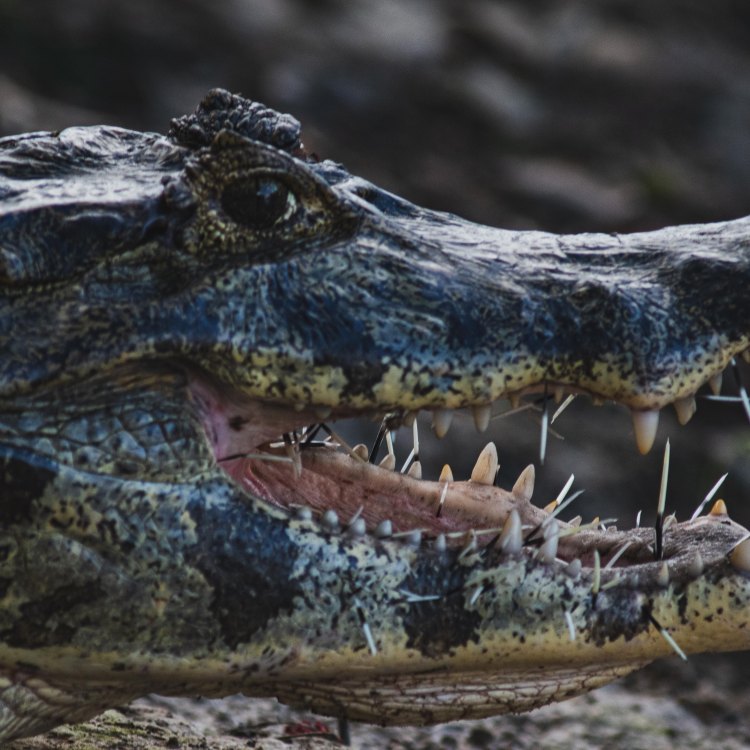
Caiman crocodilus
Caimans: The Mighty Top Predators of the Wetlands
When one thinks of the wetlands, the first image that often comes to mind is that of alligators lurking in the murky waters. However, there is one creature that is often overlooked but is just as fascinating and powerful – the caiman. These reptiles may not have the same level of notoriety as their larger cousins, the alligators and crocodiles, but they are an essential part of their ecosystem and have a unique set of characteristics and features that make them stand out.Caimans are members of the Alligatoridae family, along with alligators and crocodiles PeaceOfAnimals.Com. They are native to Central and South America, and there are six different species of caimans – Smooth-fronted caiman, Broad-snouted caiman, Spectacled caiman, Black caiman, Yacare caiman, and Cuvier's dwarf caiman. In this article, we will focus on the general characteristics of caimans, but we will also take a closer look at some of the distinctive features and behaviors of the Spectacled caiman, which is the most widespread and well-studied species.
The Mighty Adult Size and Long Lifespan
One notable feature of caimans is their impressive size. While size can vary between species, the average adult size of a caiman is between 2.5 to 4 meters in length, with the largest recorded caiman measuring almost 6 meters. This size puts them in the same league as their larger cousins, the alligators and crocodiles. They have a long, slender body with powerful, muscular limbs that allow them to move quickly through the water. Their body is covered in thick, tough scales that provide them protection from predators and their environment.Caimans are also known for their long lifespan, with some individuals living up to 40 years in the wild Catalan Sheepdog. This is significantly longer than other reptiles of similar size and is due to their ability to adapt to their environment and survive in harsh conditions.
Reproductive Behavior: Mating and Egg-Laying
Caimans are sexually reproductive and will reach sexual maturity between the ages of 7 to 10 years. Mating usually occurs in the water, with males performing a series of bellows and head slaps to attract females. Once a female is attracted, copulation will take place in the water, with the male holding onto the female's neck with his teeth.After mating, females will build a nest made of vegetation and lay around 20 to 50 eggs. These eggs are then carefully guarded by the female until they hatch, which can take up to 60 days. The sex of the hatchlings is determined by the temperature of the nest, with warmer temperatures resulting in more males and cooler temperatures resulting in more females.
The Mighty Call and Nocturnal Behavior
One of the most distinctive features of caimans is their loud hissing or bellowing call. This call can travel several kilometers and is used for both communication and territorial defense. Males will often use their calls to attract females during mating season and to assert dominance over other males in their territory.Interestingly, caimans are primarily nocturnal animals, meaning they are most active at night. This behavior allows them to avoid extreme daytime temperatures and also take advantage of the cover of darkness to hunt for food. They are also able to see well in low light conditions, making them effective predators.
The Top Predator of the Wetlands and Impact on the Ecosystem
As top predators, caimans play a crucial role in their ecosystem. They help maintain the balance by controlling the population of their prey, which includes fish, small mammals, and birds. This helps to prevent any one species from becoming too dominant and potentially disrupting the entire ecosystem. Caimans also serve as a food source for other predators, such as larger crocodiles and humans.However, caimans are not without threats themselves. Habitat loss, hunting for their skin and meat, and climate change all pose significant threats to their survival. With increasing human activities in their habitats, such as deforestation and pollution, caiman populations are declining in some areas. Conservation efforts are crucial in protecting these essential reptiles and their habitat.
Social Groups and Interesting Facts
Caimans are generally solitary animals, but they may also form small groups, especially during mating season or when basking in the sun. These social interactions are mostly for mating and do not constitute a structured social group like that of some primates.One interesting fact about caimans is that they are closely related to both alligators and crocodiles, with all three species being part of the same family. Despite their similarities, they have significant differences in their physical features and behaviors.
Distinctive Features: The Ridge on the Back and Long, Sharp Snout
One of the most defining features of caimans is the ridge on their back. This ridge, also known as a dorsal fin, is made up of bony projections on the caiman's vertebrae and is used for thermoregulation, helping them to cool down in hot weather. This distinctive feature is not present in alligators or crocodiles, making it a unique characteristic of caimans.Another distinguishing feature is their long, sharp snout, which is ideal for catching prey in the water. Unlike alligators and crocodiles, caimans have a narrower and more pointed snout, allowing for better maneuverability in the water. This feature, coupled with their powerful jaws, makes them efficient hunters.
Human Use and Conservation Status
For centuries, humans have utilized caimans for their leather and meat. In some areas, caiman hunting is still practiced, although there are regulations in place to ensure sustainable use and prevent overhunting. Caiman meat is considered a delicacy in some cultures and is also used for medicinal purposes.The conservation status of caimans varies between species, with some being listed as Vulnerable or Endangered. However, the Spectacled caiman, which is the most widespread and abundant species, is currently listed as Least Concern by the International Union for Conservation of Nature (IUCN). This is a positive sign, but continued conservation efforts are necessary to ensure the long-term survival of all caiman species.
Caimans: A Fascinating and Vital Part of their Ecosystem
Caimans may not have the same level of notoriety as alligators and crocodiles, but they are an essential and fascinating part of their ecosystem. Their size, long lifespan, distinctive features, and behaviors make them stand out among other reptiles. From their loud calls and nocturnal behavior to their role as top predators and human uses, there is much to learn and appreciate about these mighty creatures. As we continue to protect and conserve their habitats, we ensure that they can continue to thrive and contribute to the balance of their unique environment.
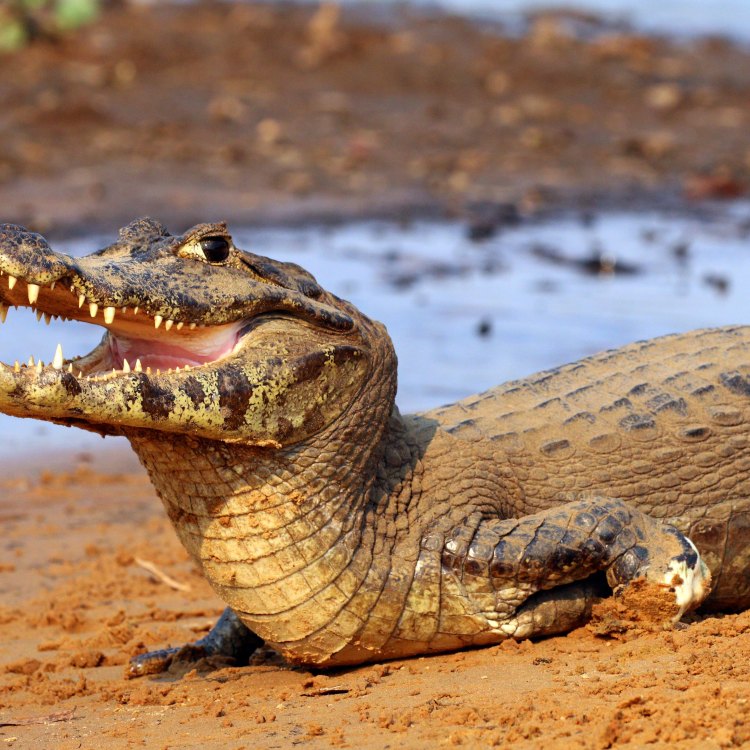
The Mighty Caiman: The Apex Predator of the Amazon Rainforest
Disclaimer: The content provided is for informational purposes only. We cannot guarantee the accuracy of the information on this page 100%. All information provided here may change without prior notice.

